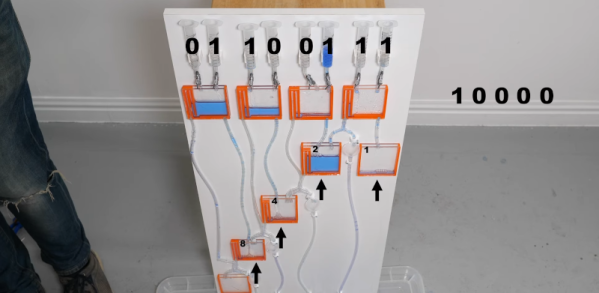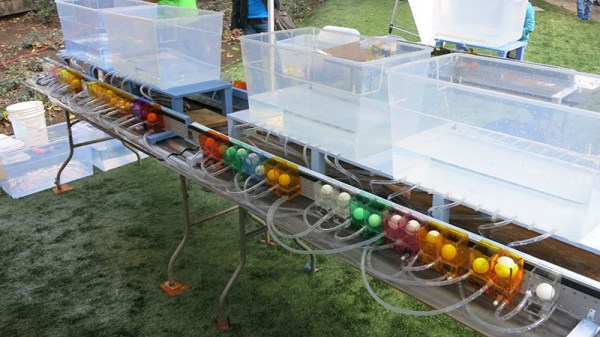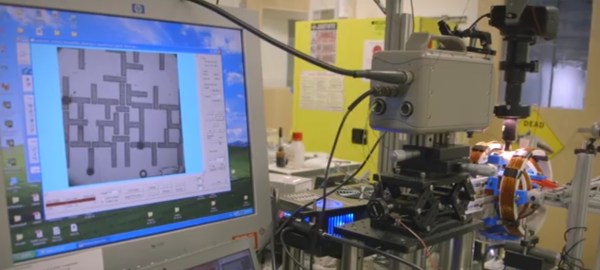A lot of elementary electronic texts use water as an analogy for electricity. You know, pressure is voltage, flow is current, and pipe diameter is resistance. It is ironic, then, that some people use fluids to build logic gates and, in fact, you can make any logic circuit you like using nothing but water flowing through some structures. Don’t think so? Have a look at the video from [Steve Mould] below.
Fluidic logic isn’t anything new, but it has always been a bit exotic. Usually, replacing electrons with water or even air — which is a kind of fluid — means you are trying to operate in a tough environment or have some other special need. As far as we can tell, [Steve] did it just because he could, and we get that.
Continue reading “Logic Flows, Literally, In This Water Adder”














